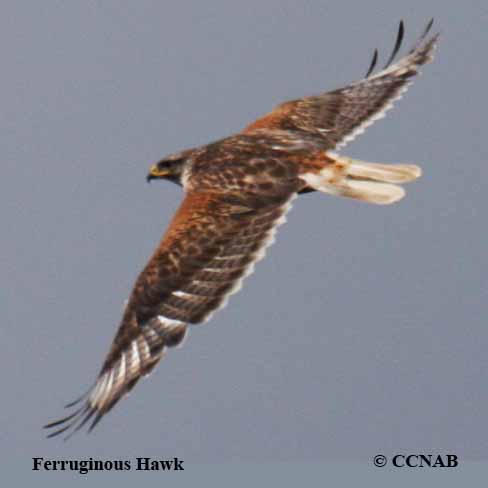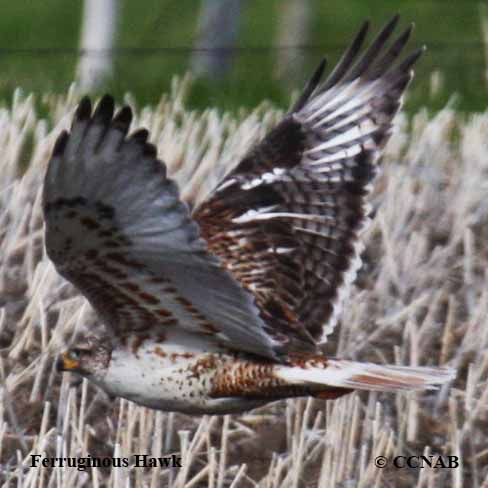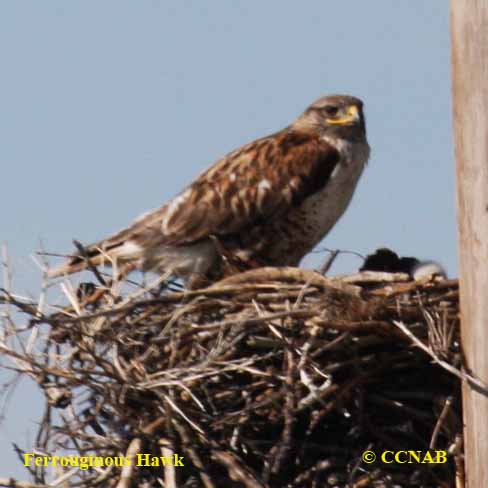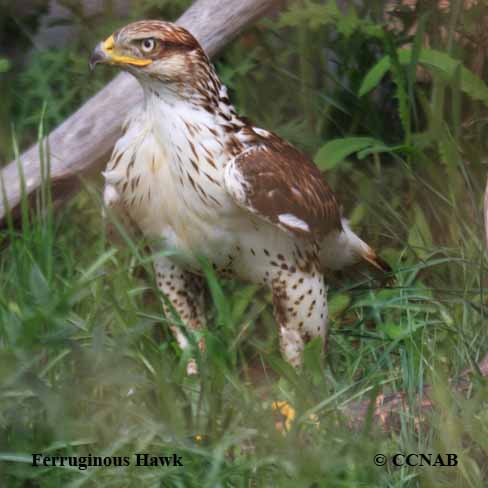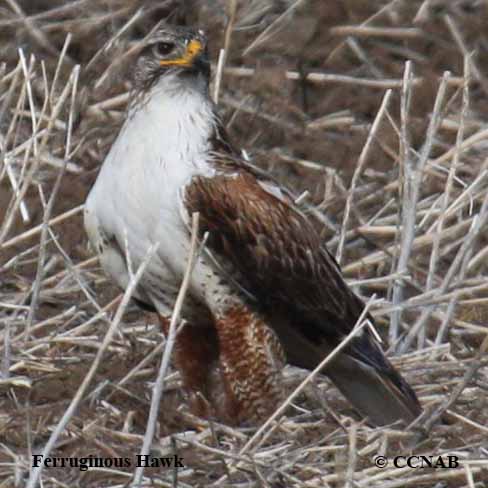North American Bird Search Box
This search box can be used to find bird species using bird's english, french or latin name, or to identify bird by its 4 letter Alpha Code
Field Guide for all the Birds of North America
Ferruginous Hawk
4 Letter (english names) Alpha Code: FEHA (1)
Buse rouilleuse
Buteo regalis
Information, images and range maps on over 1,000 birds of North America, including sub-species, vagrants, introduced birds and possibilities
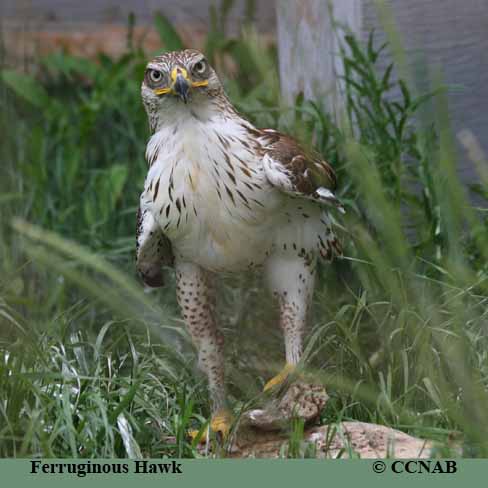
Species: The Ferruginous Hawk (Buteo regalis) is the largest member of the buteo family in North America. This large bird of prey prefers open habitat such as prairies and sparsely treed grasslands. The main diet is ground squirrels, prairie dogs, rabbits, snakes and large insects. It is commonly seen perched on fenceposts or in trees next to highways. When prey is spotted, it will fly up into the sky over the prey and then it will dive down upon it.
Distinctions: Adults are similar in appearance, the female being the larger of the two. According to some observers it is seen in three morphs. One being a light rufous back, white on breast and the underwings. Second morph, which has a darker rufous body, with a light rufous breast and underwings. Then the third morph being a dark brown body, whose outer wing feathers are white. These birds, like the Rough-legged Hawk, have feathered feet right to the toes. A large beak, with a large yellow gap stopping below the eye. The top of the wings have large white areas at the base of the primaries and secondaries, a white tail with very light makings.
Voice: Silent on most occasions, shrill two syllable calls, repeated over.
Nesting: Two to three white or bluish white eggs, one brood per year. Nest built in mature trees, high above the ground. Built from branches, sticks, twigs, leaves and softer materials. Usually, located in gullies or wooden groves.
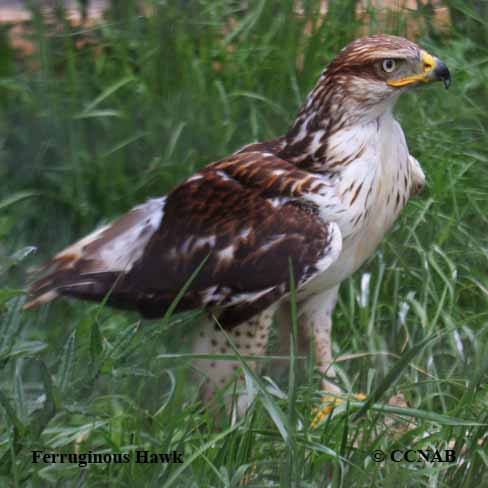
Life, Habitat & Pictures of North American Hawks
| B L | W W | W | Family | Latin Name |
|---|---|---|---|---|
| 23" 58cm | 56" 1.42m | 3.5lb 1.58kg | Accipitridae | Buteo regalis |
North American Birds Videos
- Click here - Light plumage morphed soaring
- Click here - Light plumage morphed soaringe
- Click here - Light and dark morphed plumage standing in field
- Click here - Light and dark morphed plumage standing in field
- Summer
- Year Around
- Winter
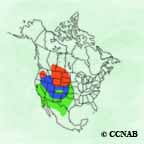
Distribution: Reports going back as far as eighty years state that this hawk is uncommon. It can be seen in southern Manitoba, west to southern Alberta and into southern Washington as well as throughout the western states. It migrates into California as far as Northern Mexico and the western half of Texas. Population numbers may reflect loss of habitat and persecution by man
Reference to Other Bird Site:
ABA - American Birding Association This site represents an organization that maintains official records of all birds species that have been proven to have been seen inside the perimeters of the North American Continent and the surrounding bodies of water. Regular revised versions are posted to keep the bird list current at all times. This is the list used by all serious birders over their lifetime. You may be aware of the movie called the "Big Year". It was with this list that all the competing birders used in an attempt to set a new record as to how many bird species that could be seen by an individual birder in one calendar year.
